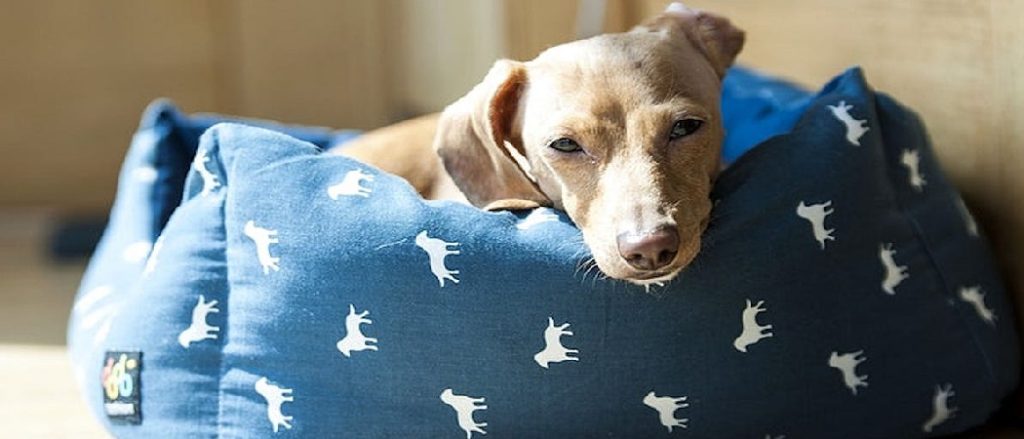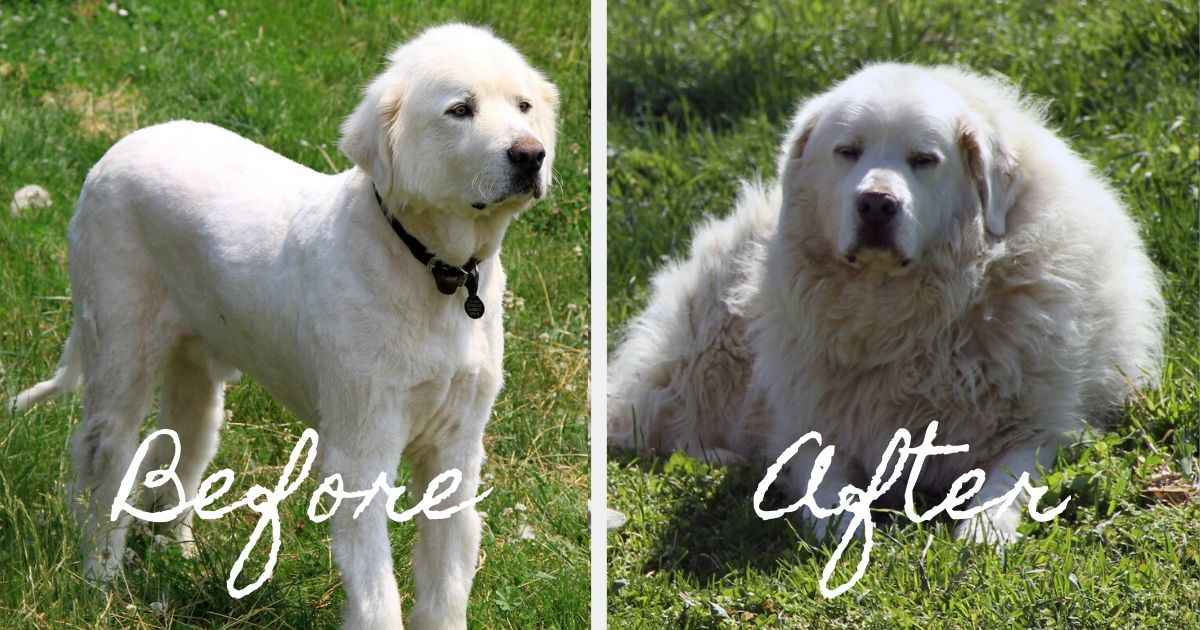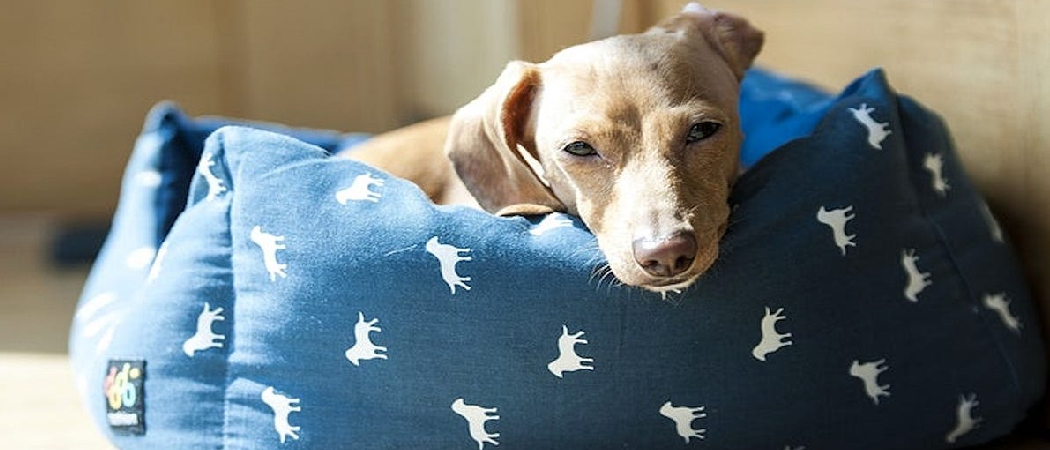To help dogs fur grow back, provide a healthy diet and regular grooming to maintain their skin and coat health. A dog’s fur is an essential part of their overall well-being, protecting them from the elements and regulating their body temperature.

However, there are instances where a dog may experience fur loss due to various reasons such as allergies, medical conditions, or trauma. If you want to help your furry friend’s fur grow back, it’s crucial to address the underlying issue.
Firstly, ensure that your dog is on a balanced and nutritious diet as proper nutrition is the cornerstone of healthy fur growth. Secondly, regular grooming practices like brushing and bathing help improve blood flow to the skin, promoting the growth of new fur. Finally, consulting with a veterinarian can help identify any underlying medical conditions that may be inhibiting fur growth. By following these steps, you can aid in restoring your dog’s fur to its natural glory.

Credit: www.stylecraze.com
Understanding Dog Hair Loss
Seeing your furry friend losing their coat can be a cause for concern. Dog hair loss, or alopecia, can result from a variety of factors. Understanding the underlying causes and identifying the hair loss patterns can help you take the necessary steps to help your dog’s fur grow back.
Common Causes Of Hair Loss In Dogs
There are several reasons why dogs may experience hair loss. It is important to recognize these common causes in order to address the issue effectively. Some potential culprits include:
- Parasites: Fleas, ticks, and mites can infest your dog’s skin, leading to itching, irritation, and hair loss.
- Allergies: Just like humans, dogs can develop allergies to various substances, including certain foods, environmental allergens, and even fleas. These allergies can manifest as skin inflammation and hair loss.
- Hormonal imbalances: Hormonal changes, such as an underactive thyroid or excessive production of adrenal hormones, can disrupt the hair growth cycle and result in hair loss.
- Infections and inflammatory conditions: Bacterial or fungal infections, as well as skin disorders like dermatitis, can cause hair loss as a secondary symptom.
- Underlying health issues: Certain medical conditions, such as Cushing’s disease or autoimmune disorders, can lead to hair loss in dogs.
Identifying Hair Loss Patterns In Dogs
Observing and identifying the patterns of hair loss in your dog can provide valuable insights into the potential causes. It is important to note that hair loss can manifest in different ways, including:
- Patchy or focal hair loss: This pattern involves the loss of hair in specific areas, often resulting from localized skin infections, trauma, or allergic reactions.
- Uniform hair thinning: If your dog’s coat becomes uniformly thinned out, it may indicate hormonal imbalances or nutritional deficiencies.
- Seasonal shedding: Dogs, especially those with double coats, typically shed their fur twice a year. Excessive shedding beyond these periods might point to an underlying health issue.
- Generalized hair loss: When hair loss occurs all over the body, it could be indicative of systemic diseases, such as hormonal disorders or autoimmune conditions.
By noting the specific pattern of hair loss, you can provide helpful information to your veterinarian, facilitating a more accurate diagnosis and targeted treatment plan.
:max_bytes(150000):strip_icc()/how-to-make-hair-grow-faster-2000-601b14a6c7ae4464adda52e2a17abee3.jpg)
Credit: www.realsimple.com
Promoting Hair Growth In Dogs
When it comes to helping your dog’s fur grow back, there are several steps you can take to promote hair growth. One crucial aspect is addressing any underlying issues that may be hindering hair growth, such as nutritional deficiencies or skin conditions. By improving nutrition, addressing skin conditions, and using supplements and topical treatments, you can help your furry companion’s coat regain its former glory.
Improving Nutrition For Healthy Hair
Proper nutrition is essential for healthy hair growth in dogs. Ensuring that your pet receives a balanced diet rich in essential nutrients can support the growth of new hair and improve overall coat health. Here are a few key nutrients to include in your dog’s diet:
- Protein: Dogs need high-quality protein sources such as lean meats or fish to promote hair growth. Protein provides the building blocks necessary for strong and healthy hair follicles.
- Omega-3 fatty acids: These fatty acids are known for their anti-inflammatory properties and can help reduce skin irritation and itching. Fish oil supplements or incorporating fatty fish like salmon into your dog’s diet can provide a good source of omega-3s.
- Biotion: Biotin is a B vitamin that plays a vital role in promoting healthy skin and hair. Including biotin-rich foods like eggs and liver in your dog’s diet or using biotin supplements can support hair growth.
- Vitamin E: Vitamin E is known for its antioxidant properties and can help promote a healthy coat. You can find vitamin E in foods such as almonds, sunflower seeds, and spinach.
Addressing Skin Conditions
Some dogs may experience skin conditions that can affect hair growth. Taking steps to address these conditions can help promote the regrowth of a lush and healthy coat. Here are a few common skin conditions and ways to address them:
| Common Skin Conditions | Addressing the Issue |
|---|---|
| Dermatitis or allergies | Identify and eliminate allergens from your dog’s environment. Consult with a veterinarian to determine the best course of treatment, which may include medications or special shampoos. |
| Parasites (fleas, mites) | Regularly check your dog for parasites and use appropriate treatments to eliminate them. Additionally, keeping your dog’s environment clean and using preventative measures can help prevent future infestations. |
| Infections or fungal conditions | If your dog has an infection or fungal condition, consult with a veterinarian for a proper diagnosis and treatment plan. Medications, topical creams, or shampoos may be prescribed to address the issue. |
Using Supplements And Topical Treatments
In addition to improving nutrition and addressing skin conditions, supplements and topical treatments can help stimulate hair growth in dogs. Here are a few options to consider:
- Multivitamin supplements: These can provide a boost of essential vitamins and minerals to support overall coat health and hair growth.
- Topical treatments: There are several topical products available, such as oils or sprays, that can help nourish the skin and promote hair growth when applied directly to the affected areas.
Remember, promoting hair growth in dogs takes time and consistency. It’s important to consult with a veterinarian for a comprehensive evaluation of your dog’s specific needs and to determine the most effective course of action. By improving nutrition, addressing skin conditions, and incorporating supplements and topical treatments, you can help your furry friend’s fur grow back healthier and more beautiful than ever.
Preventing Hair Loss In Dogs
Help your dog’s fur grow back and prevent hair loss by ensuring a balanced diet, regular grooming, and avoiding excessive grooming or stress.
Regular Grooming Practices
Daily grooming is an essential part of preventing hair loss in dogs. Regular brushing not only keeps your furry friend’s coat looking shiny and healthy, but it also promotes blood circulation to the hair follicles, stimulating hair growth. When grooming your dog, make sure to use the right tools suitable for their coat type. For long-haired breeds, a slicker brush is ideal to remove tangles and prevent matting. For shorter-haired breeds, a soft-bristle brush or a rubber grooming glove can effectively remove loose hair and dirt.
Additionally, bathing your dog regularly with a mild and pH-balanced shampoo helps maintain a clean and healthy coat. Remember to use lukewarm water and a shampoo specifically formulated for dogs, as human shampoos can be too harsh and strip their natural oils.
Avoiding Irritants And Allergens
Irritants and allergens can play a significant role in hair loss in dogs. It’s important to identify and eliminate any potential triggers that may be causing your dog’s hair loss or skin irritation. Common irritants include certain cleaning products, pesticides, and even some plants. Keep your dog away from these irritants as much as possible, and make sure their living environment is clean and free from chemicals that could harm their skin and coat.
If you suspect your dog has allergies, consult with your veterinarian to determine the best course of action. Your vet might recommend hypoallergenic dog food or performing allergy tests to identify specific allergens. Taking proactive steps to avoid these irritants and allergens can help prevent further hair loss and promote the growth of healthy fur.
Minimizing Stress And Anxiety
Stress and anxiety can manifest in various ways for dogs, including hair loss. Dogs are sensitive creatures, and changes in their environment or routine can trigger stress and anxiety. To help minimize these factors, provide a stable and comforting environment for your dog. Create a safe space for them with their bed or blanket, and establish a routine that includes regular exercise, playtime, and relaxation.
Moreover, consider using natural remedies such as essential oils or pheromone diffusers to help calm your dog. Just ensure that these remedies are safe for dogs and do not pose any health risks. If you notice signs of excessive anxiety or stress, consult with your veterinarian to explore additional strategies or potential underlying medical conditions.
Regular Veterinary Check-ups
Regular veterinary check-ups are vital to maintaining your dog’s overall health, including their skin and coat condition. Veterinarians are trained to detect early signs of potential health issues that can contribute to hair loss. During these check-ups, your vet may perform a thorough examination, conduct blood tests, and recommend any necessary treatments or lifestyle changes.
These routine visits also allow your vet to monitor your dog’s progress and make any adjustments to their treatment plan if needed. Catching any problems early on can significantly prevent further hair loss and provide the best chance for your dog’s fur to grow back.

Credit: www.walkervillevet.com.au
Frequently Asked Questions On How To Help Dogs Fur Grow Back
How Can I Help My Dog’s Fur Grow Back Faster?
You can help your dog’s fur grow back faster by ensuring they have a nutritious diet, using supplements like omega-3 fatty acids, treating any underlying health issues, avoiding excessive grooming or bathing, and providing a stress-free environment. Regular grooming and a veterinarian’s guidance are also important.
Are There Any Home Remedies To Help My Dog’s Fur Grow Back?
There are some home remedies that can help promote hair growth in dogs. These include massaging the skin with coconut oil, using natural remedies like aloe vera or green tea rinses, and providing a balanced diet rich in protein and essential nutrients.
However, it’s always best to consult a veterinarian for specific advice.
Why Is My Dog’s Fur Not Growing Back?
Several factors can contribute to slow or lack of fur regrowth in dogs. These include medical conditions like hypothyroidism or allergies, hormonal imbalances, stress or anxiety, certain medications, and the aging process. Consulting with a veterinarian can help identify and address the underlying cause.
Conclusion
Supporting the regrowth of a dog’s fur requires a combination of proper nutrition, good grooming habits, and addressing any underlying health issues. By ensuring that your furry friend gets a balanced diet, regular baths and brushing, and veterinary care when needed, you can help their fur grow back and restore its natural beauty.
Remember, patience is key, as the process may take time. With love and care, your dog’s coat will flourish again, enhancing their overall health and happiness.


